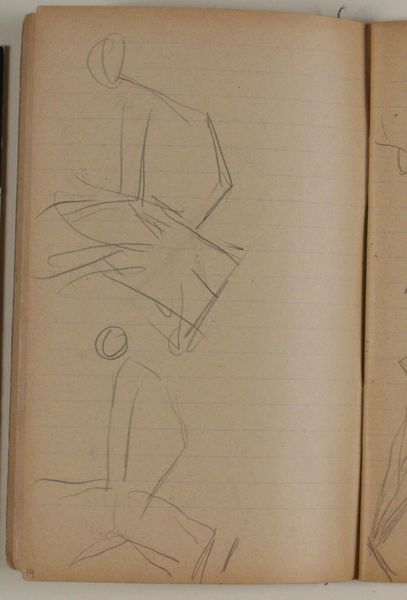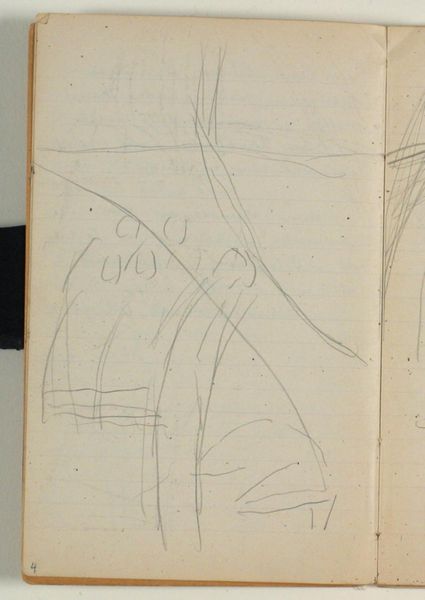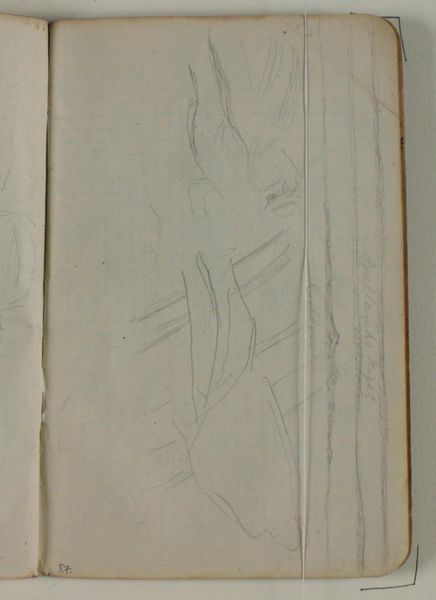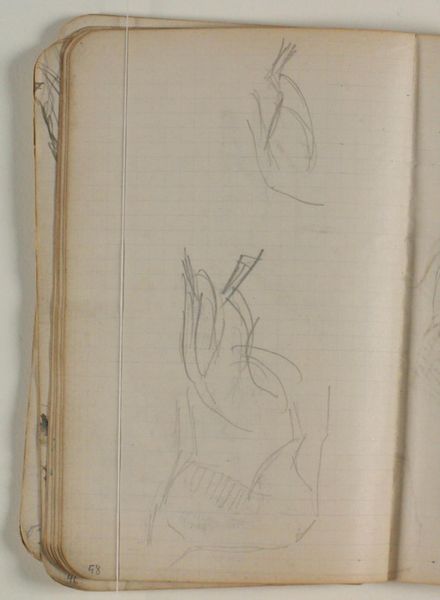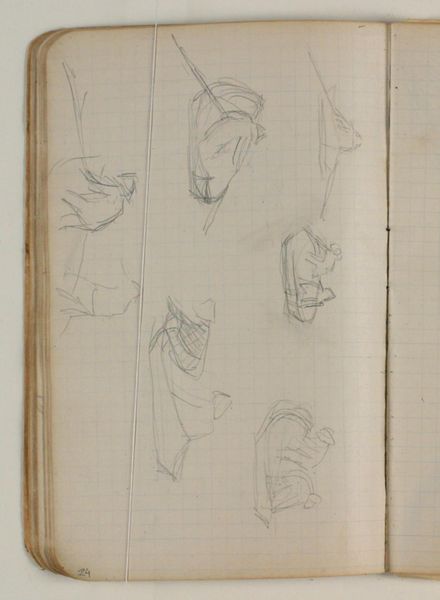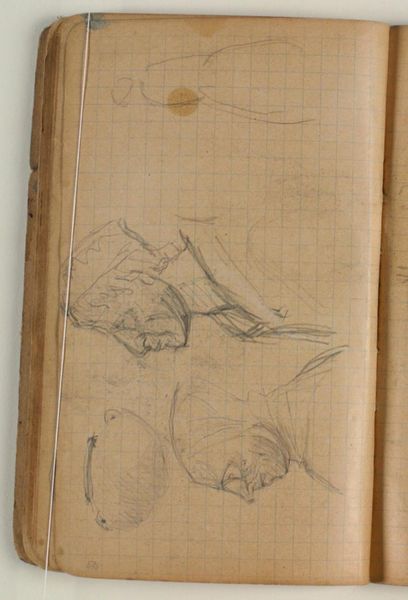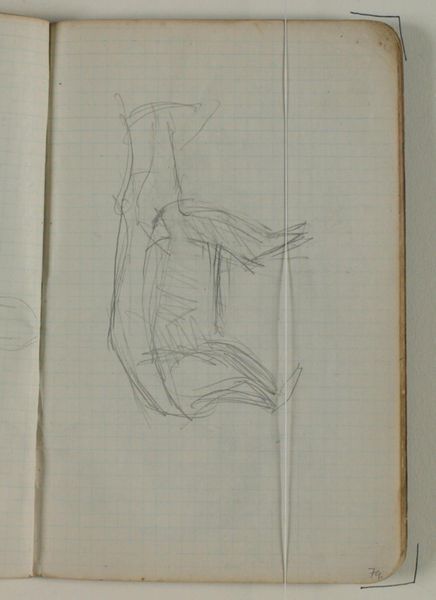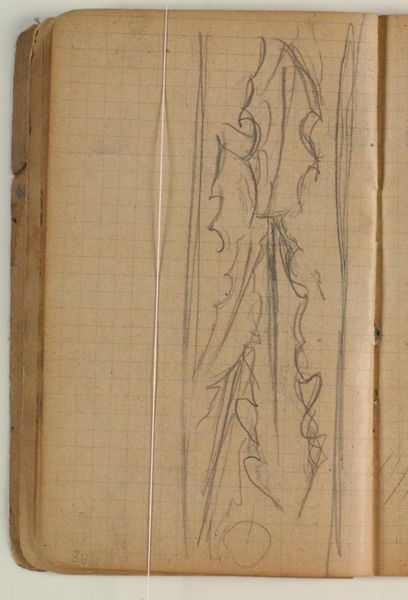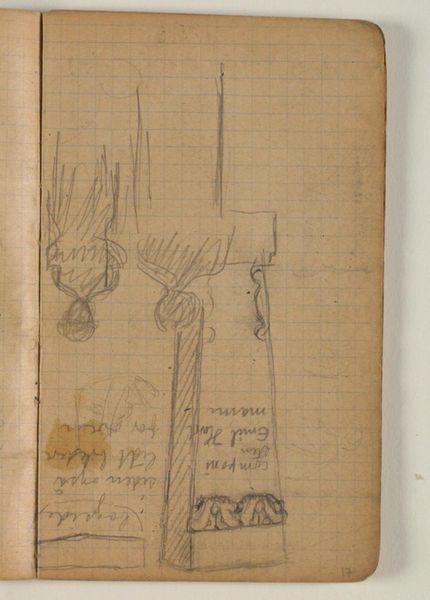
drawing, paper, pencil
#
drawing
#
figuration
#
paper
#
pencil
#
line
#
modernism
Dimensions: 163 mm (height) x 97 mm (width) (bladmaal)
Curator: Immediately, I feel a sense of arrested motion in this study by Niels Larsen Stevns. It’s called "Skitser af dansende par i et net af linjer," or "Sketches of Dancing Couples in a Net of Lines," completed around 1906. It’s rendered in pencil on paper, and you can see the grid of the sketchbook underneath the figures. Editor: It does evoke a very ephemeral feeling. There's an airy lightness that I wasn't expecting given it's just pencil on paper. They almost look like figures caught in the wind, especially with the sketchy, almost frenetic quality of the lines. I find it really visually arresting. Curator: Precisely. I think the choice of line work is interesting here. We know that Stevns was part of a generation deeply influenced by symbolism and the burgeoning modernist movements. Look at the suggestion of movement—these aren’t static representations, but attempts to capture the dynamism of dance and human interaction. He is reaching beyond a mere illustration, pushing for an experience. Editor: And the grid becomes another layer of meaning. Is it trapping them or is it a dance floor? Given its title it begs some serious questions about the restrictions or freedom within relationships in a patriarchal society, a point I suspect Stevns might have considered, especially if these couples come from particular classes. What would have been the expected forms of dance? What if couples were dancing in ways seen to be unseemly? Curator: I find the ambiguity compelling as well. Consider that these were likely quick studies, not intended as finished works, but experiments with form and movement. The medium itself speaks to accessibility—the ease and relative cheapness of pencil on paper opened artmaking to many people, reflecting evolving societal roles and art's purpose in culture. Editor: That makes me reflect again on who has the liberty to express freely with their bodies. These simple strokes become charged with social meaning when you consider whose dances were valorized at the time. Curator: It speaks volumes doesn't it? Perhaps Niels Larsen Stevns too hoped his works would speak volumes of art as being about representing human experience through representing and capturing social settings of his time, making them visually accessible. Editor: Ultimately I think Niels Larsen Stevns invites us into his private and more spontaneous moment, and perhaps with more examination encourages more reflection of how art exists in broader power systems.
Comments
No comments
Be the first to comment and join the conversation on the ultimate creative platform.
